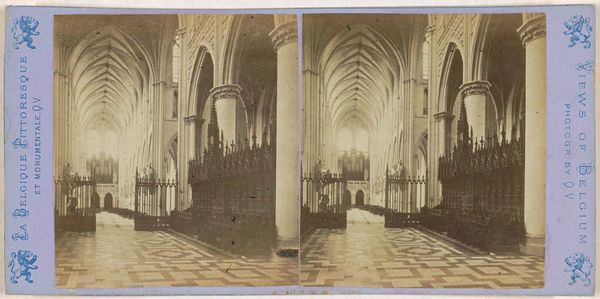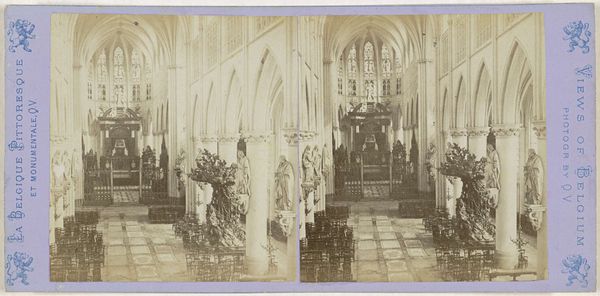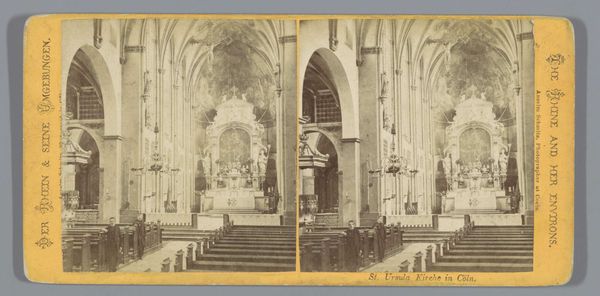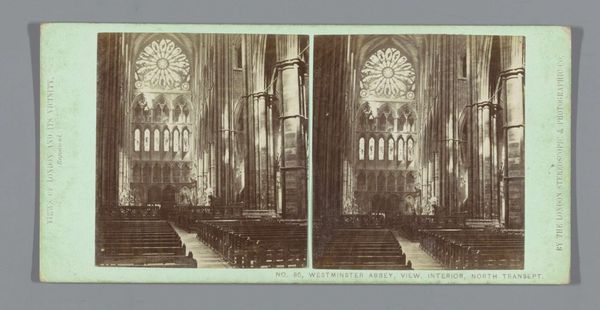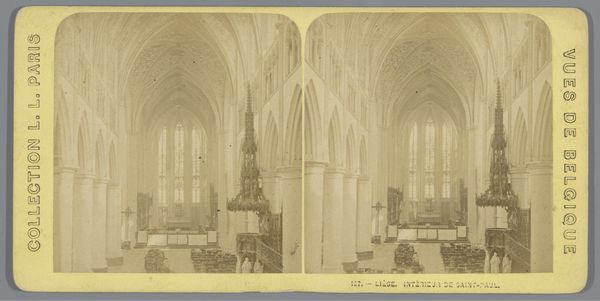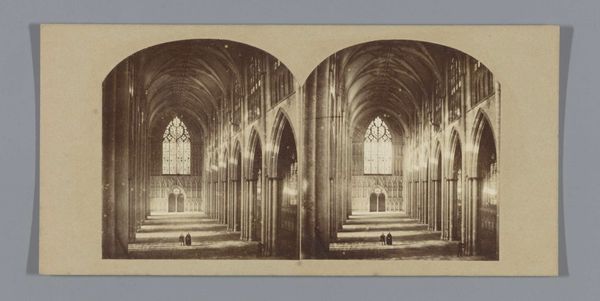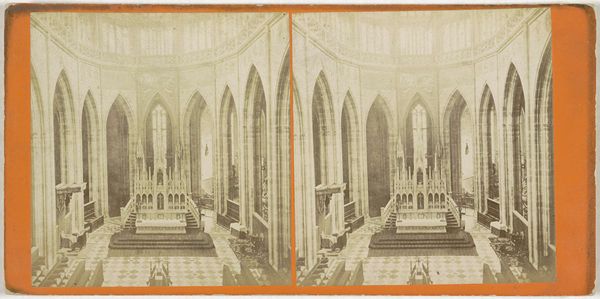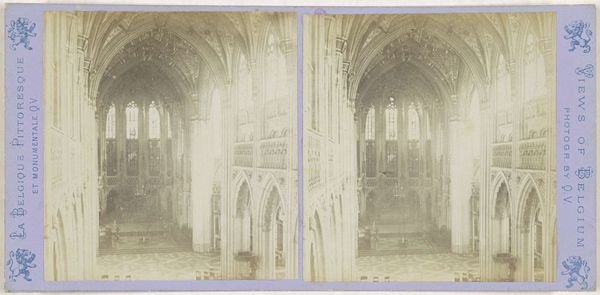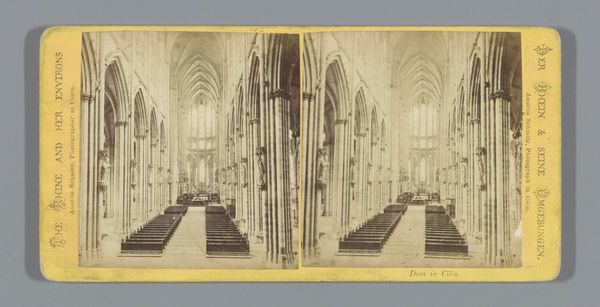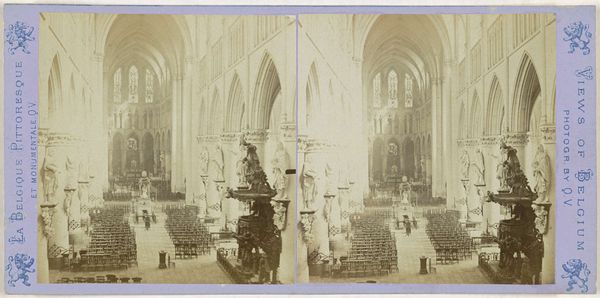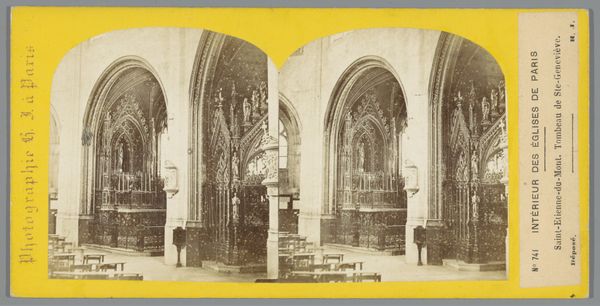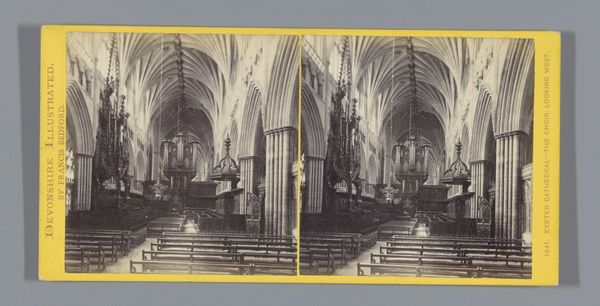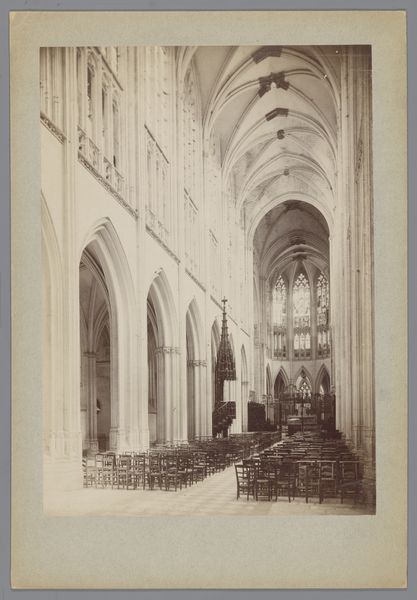
print, photography
#
medieval
# print
#
photography
#
romanesque
#
cityscape
Dimensions: height 86 mm, width 175 mm
Copyright: Rijks Museum: Open Domain
Curator: Let's discuss this fascinating photograph titled "Interieur van de Sint-Pauluskathedraal in Luik" by Jules Hippolyte Quéval, dating from 1866 to 1870. The print, now housed in the Rijksmuseum, offers an inside view of this Belgian landmark. Editor: My first thought is "austere beauty". The tall arches create a majestic feeling. I notice, also, that the rows of chairs seem quite small when contrasted with such a vast structure. There is something unsettling about the emptiness—what could it signify? Curator: The grandeur stems from the cathedral’s historical context. Its architecture showcases Romanesque and Medieval influences reflecting centuries of transformation. Remember, the power of the church and its buildings were used to reflect wealth and civic strength within the sociopolitical landscape of Belgium at this time. Editor: I see it. Thinking of it that way allows for interpreting it differently. It speaks to not only its influence but of access too. The rigid architecture emphasizes a social structure that grants rights, privileges, or representation to only a selected few. Curator: Precisely. Quéval, through his photograph, documented more than just the interior; he inadvertently captured a visual representation of religious and political authority during a transformative era for both the church and Belgium as a whole. Editor: I am struck by this photographic decision and framing now that you mentioned it. What might a more humanist frame show—focusing, perhaps, on members of the congregation or the everyday uses of sacred space? In any case, I think of this photographer, the photograph, and the architectural construction all contributing to the construction of power. Curator: That is something to consider, the deliberate selection. And to view it as such allows for a more detailed consideration of how societal power structures can literally construct spaces and shape viewpoints. Thanks for illuminating those crucial intersectional readings. Editor: Thanks for the opportunity to dive deeper into those themes! Now, every time I encounter photographs of spaces like these, I won't merely see architectural skill but the socio-political frameworks etched within.
Comments
No comments
Be the first to comment and join the conversation on the ultimate creative platform.
